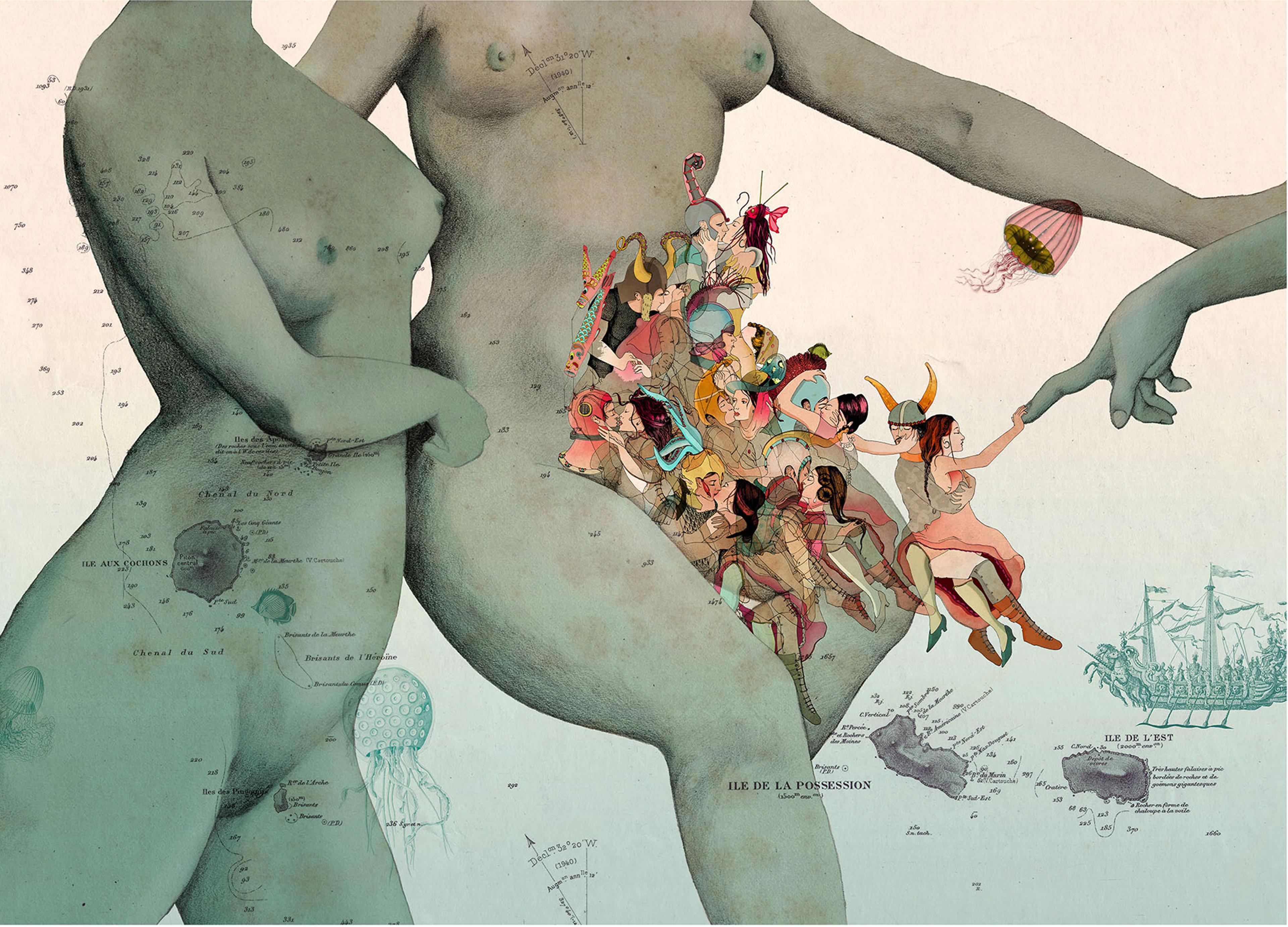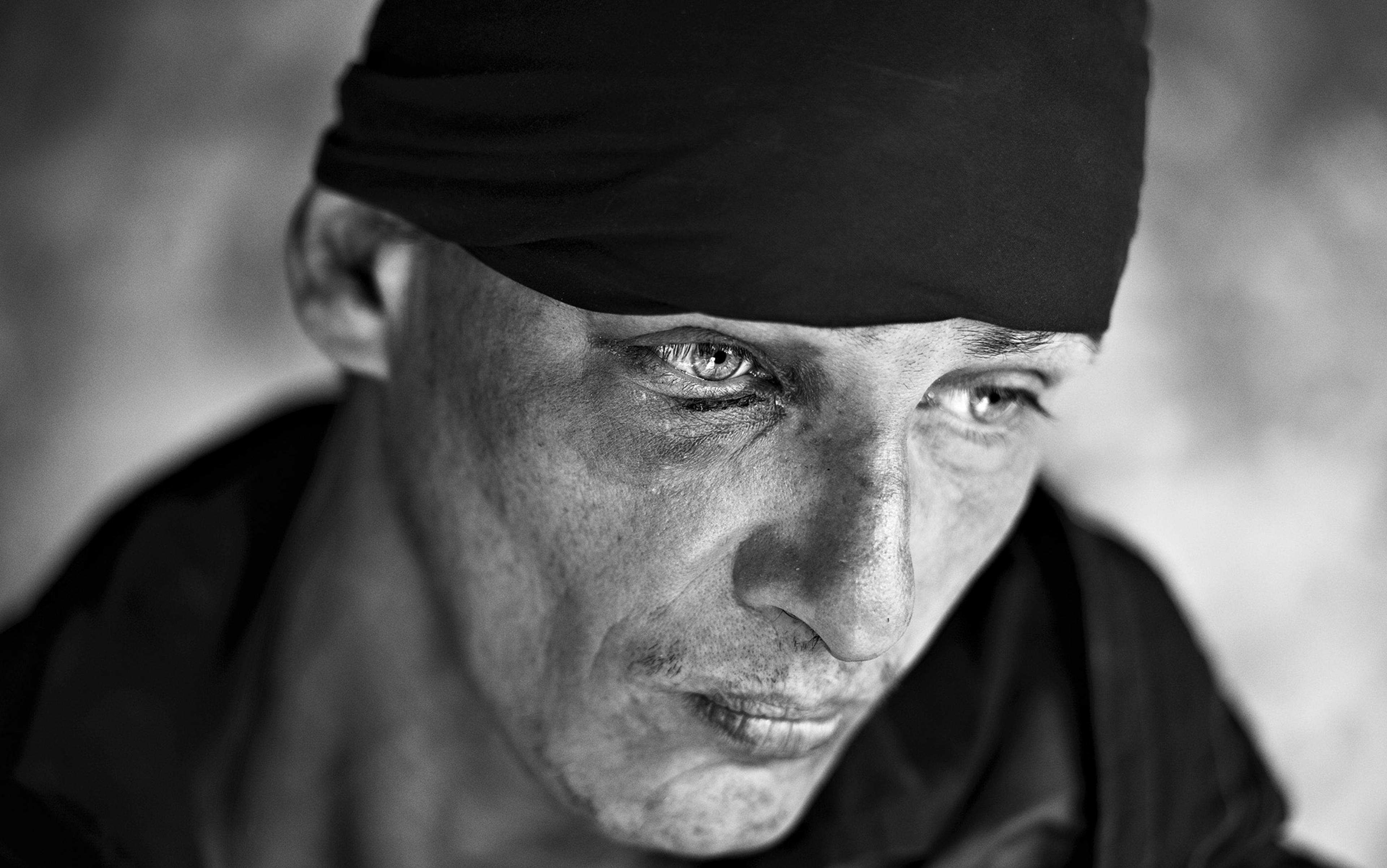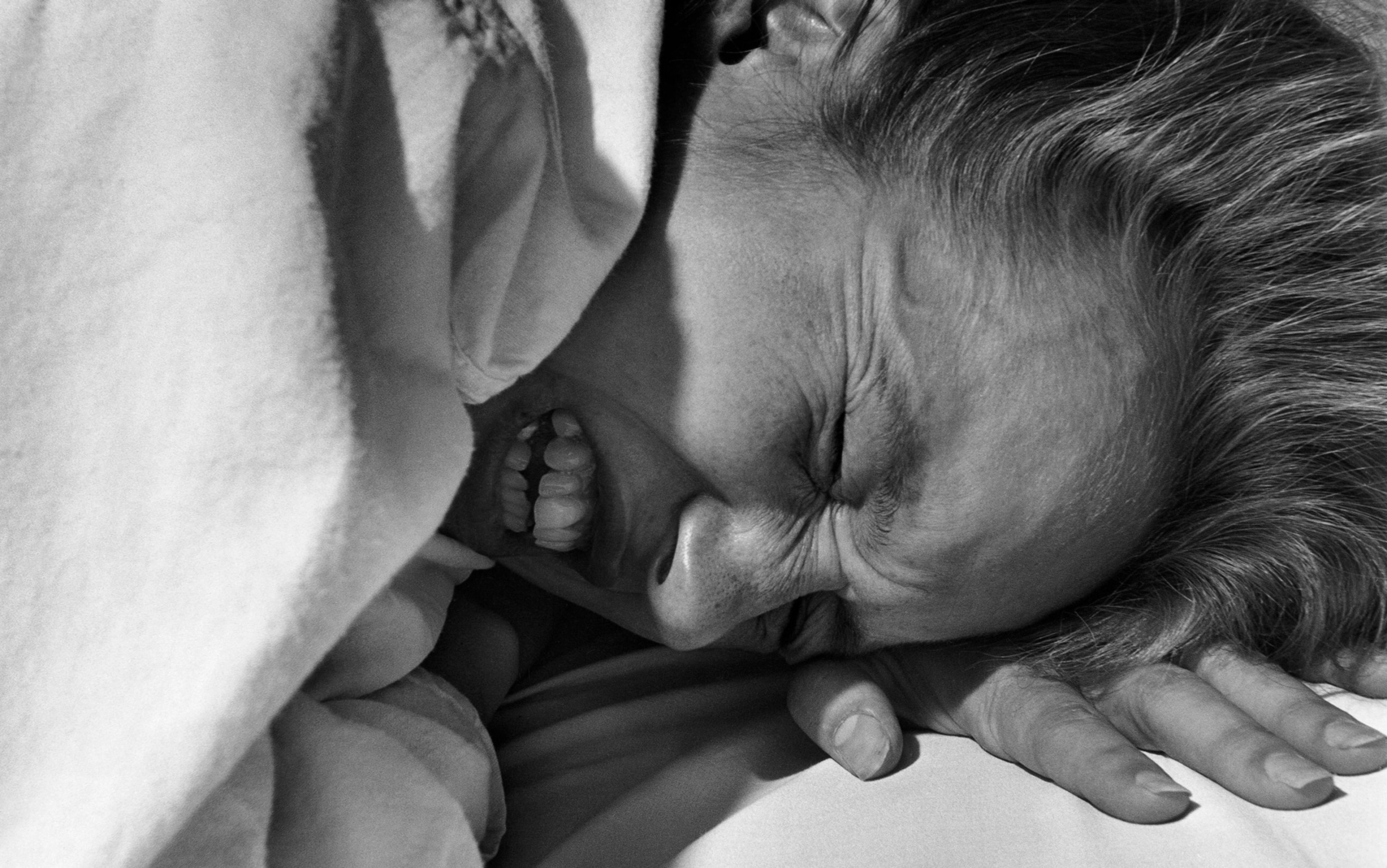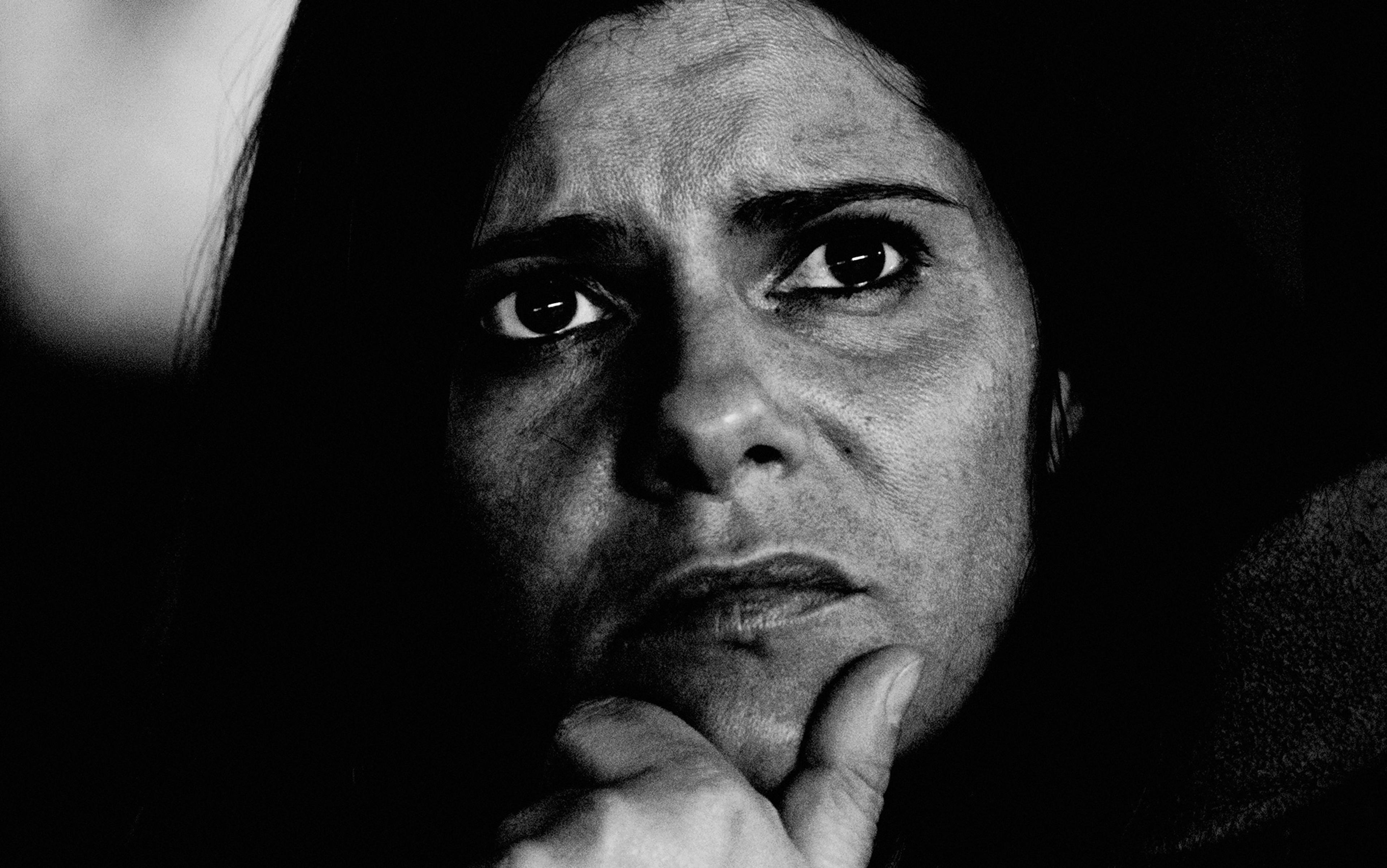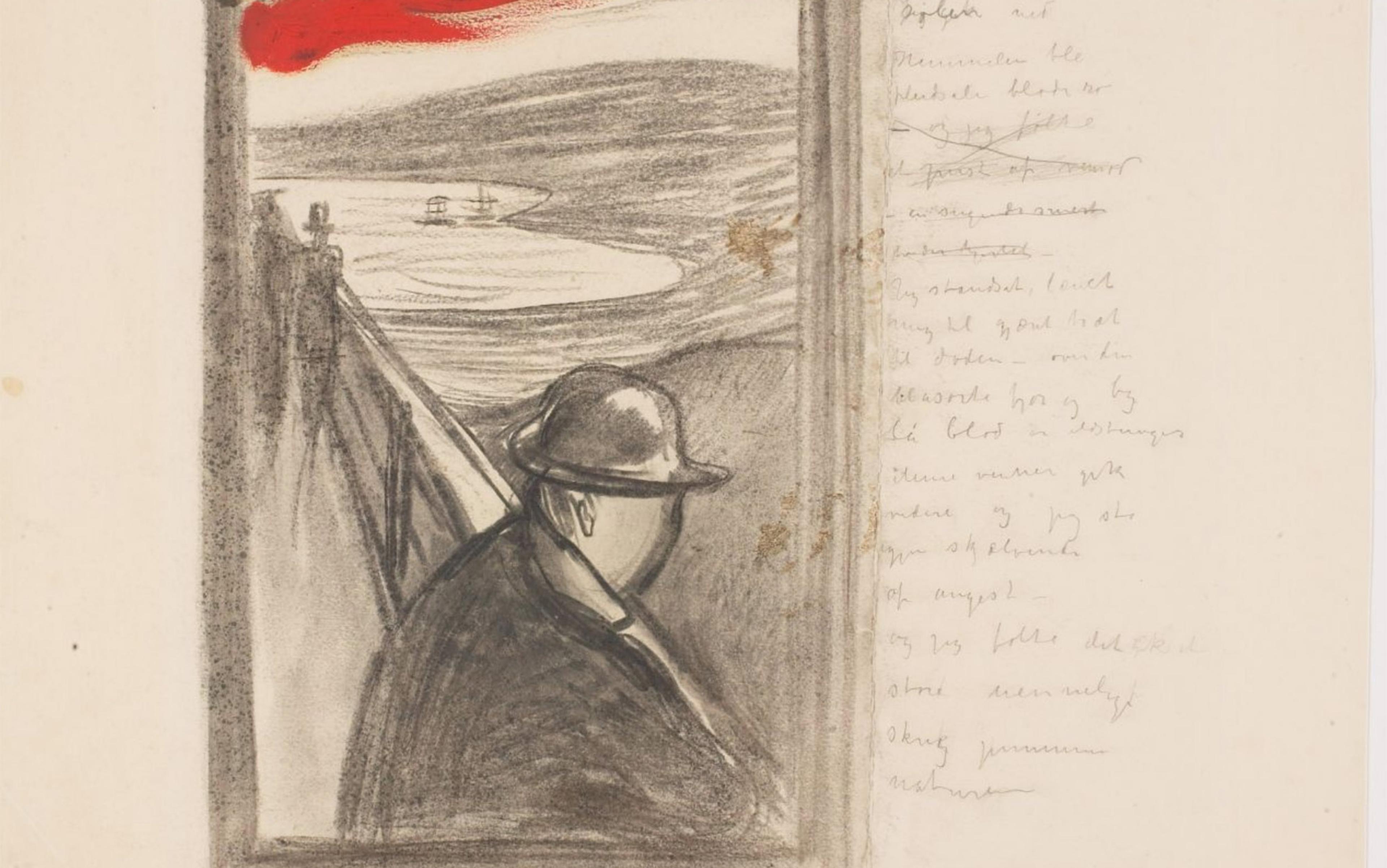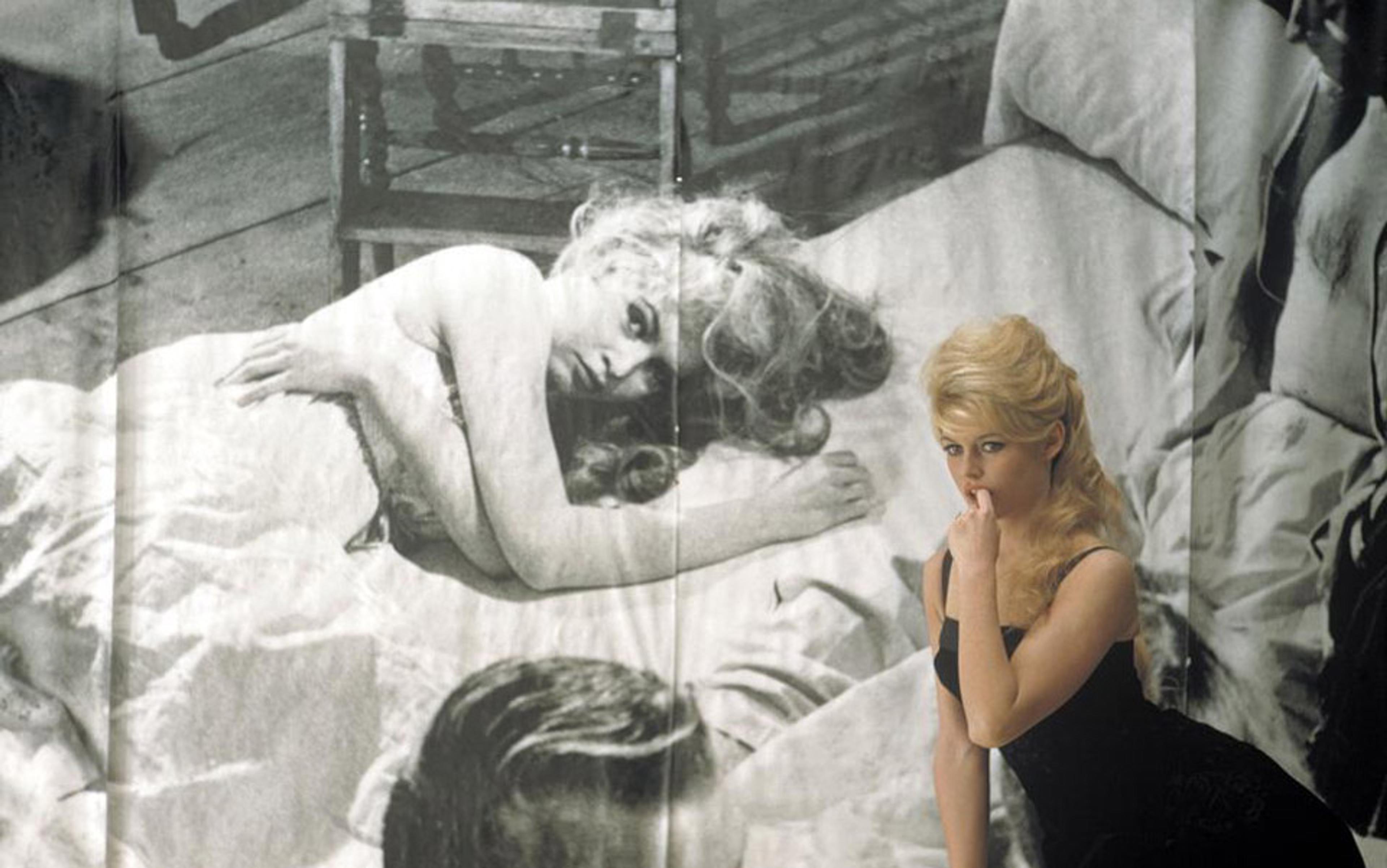I know no woman – virgin, mother, lesbian, married, celibate – whether she earns her keep as a housewife, a cocktail waitress, or a scanner of brain waves – for whom her body is not a fundamental problem: its clouded meaning, its fertility, its desire, its so-called frigidity, its bloody speech, its silences, its changes and mutilations, its rapes and ripenings.
– from Of Woman Born (1976) by Adrienne Rich
Like many women, we were reared to believe that our bodies were liabilities, things to control and conceal, obstacles on the way to gender equity. This felt particularly true for us as ‘scanners of brain waves’: women scientists and scholars, whose identities were characterised by intellectual prowess and an ability to achieve in the male-dominated sciences. Throughout our young adulthoods and early careers, we largely succeeded in becoming disembodied – until that became impossible. Physical illness, sexual trauma, miscarriage, pregnancy, childrearing and the slow, brutal onslaught of ageing has thrust us, disoriented, back into the flesh. These were embodied experiences we could no longer ignore, and we’re realising that our science can no longer ignore them either.
We study how the brain creates the fears, joys, hunger pangs, aches and pains that define the human condition. These are not just mental events, but nor are they ‘purely’ bodily ones. Like a shoreline that emerges where water and sand meet, the reality we experience arises from the interplay of bodily and cultural inputs over time – many of which are gendered. On the one side, there are internal organs that cramp and swell, breasts that engorge and sag, bones that grow and shrink, hormones that ebb and flow, and brains that are always fine-tuning it all, keeping everything in balance. On the other side, there are institutions that welcome or oppress, social relationships that support or subjugate, and narratives that empower or crush.
We invite you to walk this shoreline where biology and culture meet. The core of our approach is a recognition that the body is a biocultural artefact: stories, concepts and ideas are a large part of what makes our bodies meaningful to us, and they change how we experience our bodies in the world. This has particularly acute consequences for women. Many women are taught and believe that they’re more emotional than men, that their bodies are more difficult to understand, or that their sensations are biased and should be ignored. Many experience overt invalidation, objectification, sexualisation and fetishisation from girlhood. The result is a feedback loop that makes and marks women’s bodies in specific ways. Once we understand this, it has radical implications for gender justice.
People tell many stories about women’s bodies, using them to explain our deepest beliefs about who we are. Far from being a source of impartial facts, biology has been instrumental in many of these narratives, including those that justify gender inequalities based on supposed differences in women’s organs, hormones and brains. Biology has been used to subjugate and suppress the rights and experiences of women and other marginalised groups, and restrict access to economic, medical and social resources. At its most extreme, biology has been used to justify mass atrocities such as wartime rape or the Nazi extermination of homosexual and trans people.
It’s no wonder, then, that mainstream feminism has long treated biology as something dangerous and charged – a ‘third rail’ on which no serious feminist should tread. Instead, feminists often prefer to explain gender inequalities on the basis of cultural conditioning, as if the human body were a piece of hardware, programmed by patriarchy to enact the algorithm of gender hierarchy. But this narrative, as much as the biologically reductive one, denies women access to the truth of their own experiences. We do have bodies, and they can shape and even create our reality. But those bodies aren’t passive or fixed or silent, and they interact with and absorb culture across the lifespan.
Our scientific approach is called ‘psychological constructionism’, and focuses on answering the age-old question about how the brain creates mental life. This matter is no less complex than it was when Ancient Greek philosophers first pondered it, but we now have the benefit of more than a century’s worth of neuroscientific evidence on the topic. Collectively, this research shows that the brain doesn’t merely reflect the world ‘outside’, like a projector on a screen. Rather, it actively ‘constructs’ the meaning of those events by combining sensations arising from inside and outside the body to produce a working model of the world – a well-informed set of hunches about the meaning of sensations, based on prior experience.
Even the most fundamental feelings are filtered through the concepts we have and the societies we live in
To understand what we mean, consider the familiar thought-experiment about a tree falling in the forest: if no one is around, does it make a sound? The commonsense answer is ‘yes’. But a psychological constructionist would say that a falling tree makes a sound only if a person with hearing ears translates the associated soundwaves into sound. Moreover, for a person to hear a falling tree, they must also know what a tree is, and roughly what it sounds like when it falls. They must be able to distinguish that sound from the rush of a stream or birdsong or another large falling object, such as a boulder. All this requires time spent in the world, absorbing concepts that help us understand it and form expectations about how it behaves.
It can be tempting to assume that concepts are inborn, but even basic visual and auditory concepts (eg, ‘tree’) are shaped by experience and learning. Indeed, many scholars argue that one key function of culture is to perpetuate the concepts that are most important to a group of people. Reflect on the first time you heard a language very different from your own: without familiarity with its sounds, you might have been unable to tell where one word started and another ended. Or the first time you heard music performed on an unfamiliar scale: you might have had difficulty parsing the chords or the melody; perhaps it didn’t sound like music at all. Sensory events are just pulses of air or light, particles of chemicals, contractions of muscles, or feelings of pressure unless they are organised by the brain using concepts. The physical world is a cacophony, and humans use cultural concepts to discriminate signals – containing information that matters to us – from noise.
One might think that bodily experiences, in particular, are independent of either culture or concepts. After all, nothing feels more basic than sensations of hunger, fear, lust or joy. But even the most fundamental human feelings are filtered through the concepts we possess and by the societies in which we live. All animals have sensors scattered throughout their heart, lungs and gut that transform and transmit information about the chemical, thermal and mechanical state of the body. The brain uses this information to keep the body alive and well – to coordinate when it needs to regulate glucose and oxygen or move muscles to approach resources and avoid harm. And like sensations from the external world, your brain is always making meaning of internal sensations based on a working model. Feeling hungry or fearful, it turns out, isn’t altogether unlike hearing a tree fall in the woods.
Once we appreciate that bodily sensations are made meaningful via concepts we absorb from culture, it’s easy to see how sex and gender, as well as other social identities, come into the picture. Many of the ideas that psychological constructionists are now testing experimentally were first suggested by intersectional feminist scholars in critical race studies, disability studies, fat studies and gender studies. They were among the first to observe that cultural concepts are constructed and applied differently depending on a person’s race, ethnicity, ability, gender, sexual orientation and class. As the scholar Riki Lane wrote, a person’s sex doesn’t arise in an ‘additive’ but a ‘transformative’ process: not from ‘x per cent genes plus y per cent intra-uterine hormonal experience plus z per cent early psychosocial experience’, but from factors that interact ‘in a complex non-linear, contingent manner to produce unique combinations of sexed bodies and brains, gender identities, and social relations’.
Yet for too long, psychology, neuroscience and medicine have focused on the experience of a hypothetical average person: someone who’s either explicitly or implicitly male. Androcentrism, as it’s known, isn’t just a symptom of bias in science and medicine, but the consequence of a society where the ‘default-male’ is encoded in language, leisure and law. The heights of desks, the shapes of cars, the size of phones, the width of piano keys – all are built in ‘one-size-fits-men’ terms, as Caroline Criado Perez has argued. The bodies of women and other gender minorities are simply perceived as a divergence from the norm – ‘mutilated males’, in Aristotle’s words.
But taking women’s experiences seriously doesn’t mean reducing them to a monolithic block. Even at the most basic level, biological sex is extraordinarily complex, and women themselves are gloriously diverse: in their biological make-up, their trajectory across the lifespan, and their social identities and enculturation. This diversity is central to our understanding of embodiment, yet most studies are conducted with cisgender men and women, most of whom are white, Western, well-educated, able-bodied and heterosexual. Much more research is needed to understand how these principles manifest across diverse peoples.
Looking at embodiment through the prism of psychological constructionism changes how we might think about improving women’s health and wellbeing – particularly in regard to important phenomena such as menstruation, pregnancy and hormone therapy. These are not universal experiences for all women, and many individuals who have these experiences, such as transgender men or nonbinary people, are not women. That said, these states, often neglected by biomedical science, serve as a valuable starting point for exploring the implications of psychological constructionism for gender justice.
Hunger is one of the most fundamental and least understood psychological experiences. It can sound deceptively straightforward: a mere chemical signalling to the brain, indicating that blood glucose has dropped below a reasonable threshold. Such signalling results in a host of internal sensations ranging from low energy, difficulty focusing, agitation, unpleasantness, shakiness and gastric motility. Yet mental experiences of hunger are not an inevitable byproduct of physiological sensations; rather, they require that the brain make meaning of those sensations as feelings of hunger, using external cues such as time of day and cultural scripts about what it means to be hungry.
Sensations of hunger don’t just cease because we overlook, misunderstand or ignore them
As anyone who’s ever been ‘hangry’ can report, the same raw sensations can be experienced as other internal states such as anger. In our lab, when we ask subjects to fast and then complete a series of experimental tasks, those who aren’t paying attention to their bodies report feeling impulsive, aggressive, negative and even more hateful of others or judged during social interactions – not hungry. Yet when subjects are prompted to introspect and become aware of their feelings, these effects disappear.
Evidence is mounting that women have a unique experience of hunger, caused by how we filter our own biology through gendered concepts about the body. Biologically, it’s true that women’s nutritional needs vary on average from those of men: for example, differences in muscle and fat distribution across the body affect how energy is metabolised, which in turn contributes to the biological drive to eat. Naturally cycling hormones or sex hormones such as oestrogen taken through ingestion, injection or via the skin can also affect women’s nutritional needs and appetite.
But the sensations associated with hunger are also made meaningful via gendered norms about body image, eating and food, which shape how women perceive basic physiological cues signalling hunger. For example, research with ciswomen has repeatedly shown that, while they report greater bodily surveillance than men, they’re poorer when it comes to detecting objective changes in their physiology (such as their heart rate or gastric rhythms). Furthermore, research has linked these differences in task performance to experiences of self-objectification: the more a person perceives their body as an object evaluated for its appearance, the less capable they are at detecting their own internal physiological cues.
One explanation for this data is that women are being systematically trained, from an early age, to perceive themselves from the outside-in. Such self-objectification disproportionately affects women worldwide, and we suspect it’s a large part of why women in many places suffer more than men from health issues such obesity, eating disorders and nutritional deficiencies. Sensations of hunger don’t just cease because we overlook, misunderstand or ignore them. If a woman feels the discomforting sensations of hunger, but doesn’t conceptualise them as such – where does that discomfort go? One disturbing inference from the evidence is that it gets funnelled into perceptions about themselves and the world around them.
When women make meaning of their sensations against a backdrop of social messages that denigrate their bodies, it’s harder for them to take care of themselves. The body evolved to efficiently signal when and how much food humans need to consume. Yet research shows that women find eating in response to objective hunger cues more difficult than men. Relatedly, women tend to associate eating with weight gain (rather than with feelings of satiation). These types of body image-related beliefs are important risk factors for dieting and eating disorders – conditions that negatively impact the body, and represent a public health crisis, which disproportionately affects marginalised groups such as the LGBTQ community.
Psychological constructionists would say that hunger emerges from converging biological and cultural influences – and that it’s both a consequence and a cause of continued gender inequality in food-related health and social outcomes. Addressing these inequalities requires more than mere willpower or self-confidence on the part of women. We can’t ask women to attend to their bodily needs, or teach them to do so more accurately or knowledgeably, without tackling the narratives and concepts that infuse our bodily sensations with cultural meaning.
Pain is another internal sensation that punctuates the human experience. Like hunger, pain is a constructed state – often accompanying but not requiring tissue damage. Research has shown that who we’re with, where we allocate our attention, and how we feel can all influence how we make meaning of painful stimulation. The placebo effect, for example, occurs when the experience of pain is reduced due to beliefs about the effects of a sugar pill. A placebo isn’t just imaginary – the brain and body’s representation of painful stimulation and tissue damage actually changes as a function of the placebo effect.
Conceptions of pain are profoundly gendered in both their biological presentation and cultural representation. For example, the menstrual cycle is a natural process that prepares the body to release and implant a fertilised egg in the uterus for reproduction. It begins around age 12 or 13 (though this varies according to race and socioeconomic status), and in industrialised countries continues for approximately the next 40 years. It’s characterised by multiple fluctuating hormones, the rise and fall of which prepares the lining of the uterus to support a fertilised egg, or to shed that lining as menstrual blood.
In accomplishing these goals, these hormones produce cascades of physiological changes across the body, some of which are experienced as pain. That includes period cramps that can occur when the uterus contracts to release its lining. Other women feel pain during ovulation when an ovarian sac containing an egg grows and ruptures. In the days before their period, women might experience joint and muscle pain, headaches, breast pain, and gastric pain. Moreover, fluctuations in sex hormones can affect how the brain processes pain sensations more generally. For example, when oestrogen levels are relatively high, the brain releases natural opioids that dampen experiences of pain. When oestrogen levels are low, women often report experiencing more intense pain. Many women undergo similar physiological changes when taking sex hormones. For example, many women who are prescribed oestrogen as part of gender-affirming healthcare can experience novel, often intense, symptoms as changes occur in fat distribution, muscle and skin.
When it comes to pain, women are not taught to search for insight; they’re socialised to cover up and carry on
Pregnancy is another gendered experience that produces dramatic physiological changes across the whole body. When someone becomes pregnant, the body adapts in numerous ways to accommodate a growing foetus and prepare for birth. These changes affect organs, bones, muscles, hormones, even the brain. Many of these changes – such as the stretching and separation of muscles and ligaments, or the shifting of organs to accommodate an enlarged uterus – produce sensations that can be uncomfortable and painful. All this is prior to the birth itself. Furthermore, estimates suggest that at least 10-20 per cent of pregnancies end in miscarriage (the rate is higher for Black women), often accompanied by mild to severe pain, bleeding and tissue passage, and drastic shifts in hormones lasting up to a few weeks. This is layered on top of the emotional pain, which can be profound and persist even longer.
Now pain, like hunger, is an adaptive state – while uncomfortable, it’s also an important source of insight. Menstruation, the experience of taking exogenous hormones, and pregnancy can each be a source of wisdom, authenticity, pride or even euphoria for women. When it comes to pain, however, women are not taught to search for insight; they’re socialised to cover up and carry on. Women’s experiences of pain are often ignored and suffered through in silence. This is partly because we know that such perceived vulnerability can be used against us. When we start talking about women’s pain, about ‘wounded women’, notes the author Leslie Jamison, ‘we risk transforming their suffering from an aspect of the female experience into an element of the female constitution – perhaps its finest, frailest consummation.’
Women, and the doctors who care for them, seem to have internalised these cultural norms. Studies show that ciswomen are more likely to have the early symptoms of heart attack misdiagnosed (eg, as a panic attack) or to have the serious and painful condition of endometriosis misdiagnosed as psychosomatic or as menstrual pain. Such conditions can go undiagnosed for years because neither sufferers nor doctors recognise them for what they are. The average time to diagnosis for endometriosis is 12 years in the US.
During these years, where does that pain go? Is it just lived in, like a corset or high heels, embraced as an emblem of womanhood, suppressed at school or in the workplace? Or is it channelled into other mental states such as self-perceptions, emotions and attributions about the world? Humans have a knack for ignoring persistent and ‘irrelevant’ sensations, such as the whine of a computer or road sounds outside the window. For women whose pain is invalidated, chronic pain might serve as a nagging buzz of shame and discomfort: an implicit backdrop to their ongoing perceptions, thoughts and feelings.
Addressing inequities in the prevalence and treatment of pain requires us to recognise the interconnected roles of biology and culture. We must understand the biological forces that shape women’s pain, and combat the cultural narratives that encourage women to ignore, suppress or feel shame about it. At the same time, scientists and doctors need to care about how people feel about their bodies as much as they do about the operation of the body itself. These are necessary preconditions for developing healthcare technologies, drugs and practices that better serve women and gender-diverse populations.
A final area where psychological constructionism can reshape our approach to gender equity is perhaps the most loaded and least understood – emotion. Emotions, just like other feelings and perceptions, are constructed states. Much of the research in our discipline focuses on how everyday emotions such as fear, anger and joy emerge from the biocultural shoreline. Emotions allow us to make meaning out of the raw ingredients of sensations coming from our body and the world. So too do disordered emotions that make up affective disorders, such as major depression, generalised anxiety and somatic disorders.
Affective disorders contribute to trillions of dollars in healthcare costs worldwide and millions of deaths each year; they are also a leading cause of disability and can significantly reduce quality of life. And they are nearly twice as common in women compared with men. In particular, the prevalence of affective disorders among trans people is alarmingly high. As one example, the rate of lifetime depression for transgender women in the US is nearly four times higher than that of the general population.
These differences are influenced by biology. The onset of affective disorders coincides with key developmental periods: they typically emerge during puberty; can increase during pregnancy, postpartum and menopause; and decline after menopause. Evidence also shows that affective symptoms such as anxiety and depression vary over the course of the menstrual cycle: one study showed that changing levels of oestrogen and progesterone were associated with different patterns of connectivity between brain networks linked to experiences of negative emotion. Studies of the effects of hormone therapy among perimenopausal women found similar results – higher doses of hormones such as oestrogen augment experiences of negative emotion. (Notably, studies following transgender adults receiving hormone therapy found that exogenous hormones can significantly improve mental health, suggesting that the negative effects of hormones on mood are not inevitable.)
Women are less likely to get treated for pain than men, and more likely to get treated for depression or anxiety
Culture also plays a role. Low power, chronic stress, discrimination and other negative life events all increase the risk that a person will have an affective disorder, and are all faced more acutely by women in many societies. Women experience higher rates of domestic and sexual violence; they can experience pregnancy loss or childbirth trauma. Adverse life circumstances such as war and poverty disproportionately affect women, and women are also more likely to be socially disadvantaged, with less financial security and fewer professional opportunities. These circumstances are particularly pressing for low-income women, women of colour, and transgender women.
Given these realities, both women and their care providers are more likely to transform internal sensations into experiences and perceptions of emotion, guided by the antiquated belief that women are ‘inherently’ more emotional than men. Studies (with cisgender participants) show that women don’t report different experiences of emotion during everyday life, yet women consistently report beliefs that they experience emotion more often and more intensely than men. In fact, the more a woman endorses gendered stereotypes about emotions, the more she might recall feeling intensely emotional during an evocative event.
The perceived centrality of emotion to women’s lives reverberates through our healthcare systems. While women are less likely to get treated for pain symptoms than men, they are more likely to get treated for affective symptoms such as depression or anxiety. Women are more likely to be diagnosed with internalising disorders characterised by distressing emotions and thoughts, whereas men are more likely to be diagnosed with externalising disorders, characterised by distressing behaviours (aggression, drug use). These facts are consistent with a narrative that ascribes emotion to women and violence to men.
Like hunger and pain, emotions are the brain’s insights: they signal underlying biological and structural realities and serve as important communication tools when seeking support. It’s important that we teach women (and individuals of all genders) how to mine these insights within themselves. Likewise, it’s important that we build support structures that acknowledge the biocultural feedback loops that fuel women’s emotion. Any woman who’s been bounced around between primary care physicians, medical specialists and mental health practitioners can attest to the need for change. When women are denied information about their bodies, and are instead fed narratives that make them construe their discomfort as ‘only’ emotional, they are denied autonomy.
Walking the shoreline where biology and culture meet, we see how women’s experiences emerge from the interplay of unique physiological sensations and sociocultural realities. The shape of this littoral has shifted over millennia, and continues to shift over the course of a single human life. Its dynamism has important implications for human health and wellness in the here and now. As Adrienne Rich wrote in Of Woman Born: ‘There is for the first time today a possibility of converting our physicality into both knowledge and power.’
When a tree falls in the forest does it make a sound? When a woman cries in discomfort, does she make a sound? According to psychological constructionism, these questions share a common answer. Seeing, hearing, smelling and feeling all require a body and an act of meaning-making. This is a collective enterprise, forged within systems of power that constrain how individuals experience themselves and the world around them. A pang of hunger, a twinge of pain, a deep hollow sense of dread: these experiences are not benign, nor are they essential or invariant. They are at once enculturated and embodied – and most of all, they’re worth listening to.

